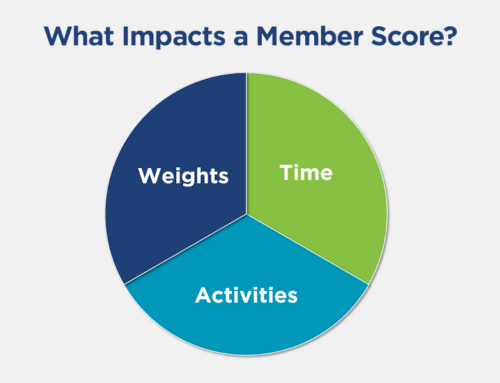Associations have made significant investments in technologies to improve how they do business online. Software is incredibly easy to purchase from hundreds of vendors, and platforms like social media sites are even free for all businesses to leverage.
The upside of technology is that it’s now easier than ever to reach members online. But the negative impact for many associations is an increasingly complex technology stack that leaves data siloed across systems.
To overcome this challenge, the next phase for Associations is an investment in analytics and a process for data governance. What this means is a centralized data lake/warehouse that consolidates data from anywhere, gives data visualizations, and helps define processes for governing how data is captured and stored.
Purchasing an analytics solution should allow you to create a 360-degree view of your business, helping you better understand member engagement and giving you insights to make smarter financial decisions.
Getting buy-in on this is still relatively new for many organizations. This blog post presents ideas on how analytics can impact your association’s profitability and long-term success. If you haven’t yet invested in a BI solution, these points may be helpful to you as you build out a business case internally.
Identify the risks of the status quo
When building out any business case, it’s important to recognize the real risks and costs associated by keeping the status quo (or not investing in analytics).
Risk #1: Missed Opportunities and Insights
Research from Gartner suggests that 80% of business data can be classified as unstructured. However, most businesses are only focused on analysis of structured data.
This means that you could be missing out on analyzing the majority of data that exists on your members.
If you aren’t familiar with unstructured data, it includes primarily text-based information (things like social media discussions or member feedback surveys) that offers valuable insight into what members are thinking and feeling. On the other hand, structured data refers to the transactional data that can be captured in rows/columns (traditionally what we think of when we talk about data analysis).
Capitalizing on unstructured data through advanced analytics is an opportunity to turn what members are saying into real insights that can help you improve products and services. The more insights you have on members, the more you can improve the member experience and increase profitability.
By ignoring unstructured data or looking at it anecdotally, you are missing out on trends and patterns that can be found across key segments of your membership. This can result in missed opportunities and higher costs over time.
Risk #2: Growing volume of data and costs associated
IDC research is predicting that data will grow by 61% by 2025. The key takeaway here is that data is growing exponentially and will continue to be a challenge for your organization if you don’t address it today.
As this data grows, so does the complexity and the requirements on your team to manage it. Many organizations will develop manual processes as a temporary fix to report on siloed data.
It’s worth calculating how much effort your staff spends quarterly on data preparation, redundant processes, and ad-hoc reporting. An analytics solution can significantly reduce the burden on your staff and position you for future success as the volume and complexity of data grows.
Explain the business impact in financial terms
The strongest way to build a business case for implementing an analytics solution in your organization is to align analytics with your strategic outcomes. Sit down with others in your organization and start to think about what questions you would like to have answered that would help you make better decisions.
Here is a list of topics many associations consider:
Revenue: Where can we find opportunities to grow revenue? What customers/members are most likely to convert?
Marketing Performance: Are there opportunities to reduce wasted marketing/advertising spend? Likewise, are there opportunities to increase marketing conversions at a lower cost?
Retention and Satisfaction: Why are members not renewing? What steps can we take to lower member frustration and increase retention?
Event Experience: What do members think about our events? How can we improve the event experience? Are there opportunities where we could generate additional event revenue?
An interesting study found that analytics pays back $13.01 for every dollar spent. When you consider how data can be involved in almost every department’s decision-making process, it’s easy to see how analytics can have such a huge return for businesses. Take the relevant KPIs at your organization and start to estimate how much potential there is to increase profits by investing in better analytics solutions. If you can see an incremental improvement on each of these business outcomes, how does that benefit your organization? Take these estimations and you should be able to show that there is potential for data analytics to have a significant return on investment.
Get Buy-in From Multiple Departments in Your Organization
The last thing to help you as you build out your business case is to remember that data analytics is an integral part of every technology investment your association has made. That means you will want to get buy-in from key stakeholders in your organization.
All the systems your teams have invested in are creating valuable data on members. A strong argument can be made to your colleagues that data analytics will help you get more out of these current investments.
For example, you may have a strategic initiative to grow member engagement. But are you able to effectively measure those programs and how they relate to key business outcomes? An analytics solution can help you show the business impact and add value to programs you already have in place.
When bringing together multiple stakeholders, you can also advocate that an analytics project will help define data governance and standards for how data is handled across the entire organization.
The final point to tell your colleagues is that your data doesn’t need to be perfect. Simply by starting an analytics and data governance project, you will be able to benchmark and identify where you have gaps in the data, and then be able to develop strategies to fix these issues.
The reality is that no one’s data is ever going to be perfect and your team should focus on making small, incremental improvements over time.
About Us
Association Analytics is an innovator in data analytics for the association market. Organizations use our product, Acumen, to combine data from key source systems into a cloud-based platform for self-service analytics. We help inform decision-making by providing consistent, complete, and trusted data that leads to actionable business intelligence.



